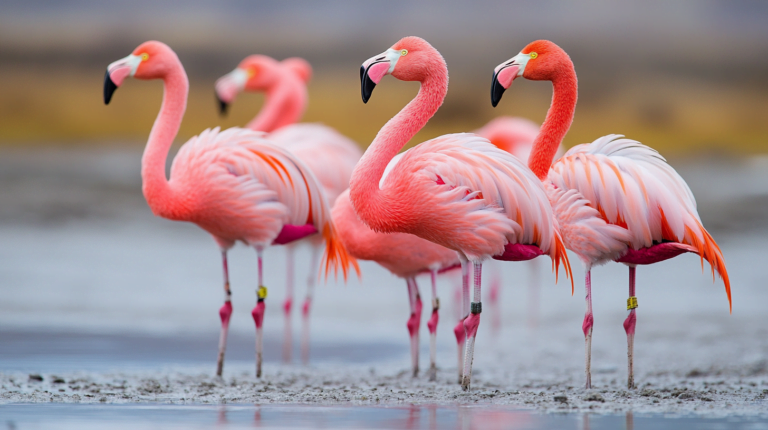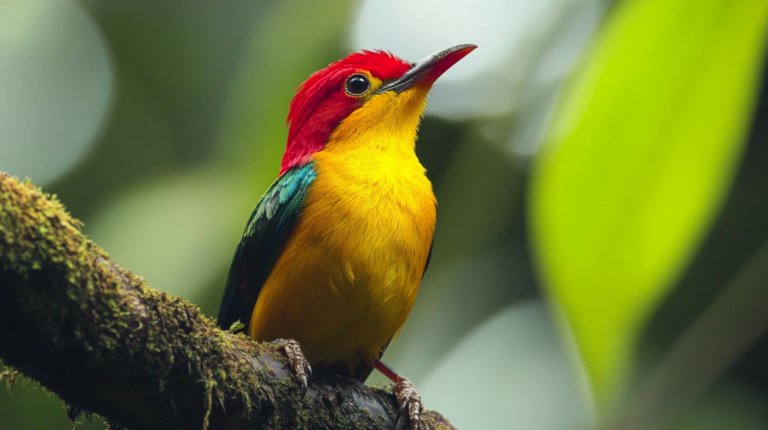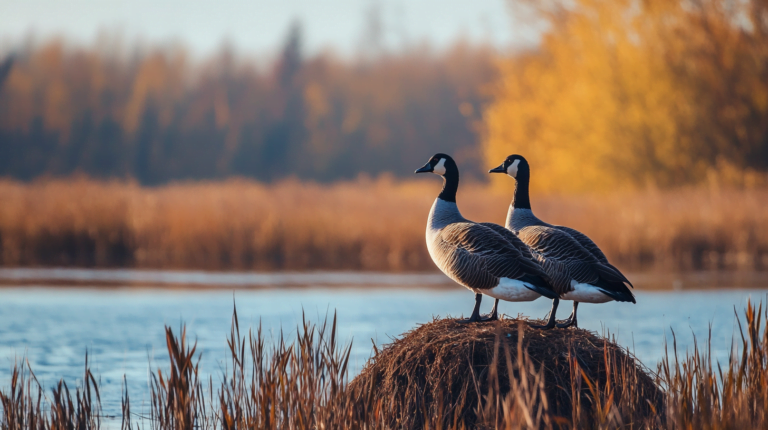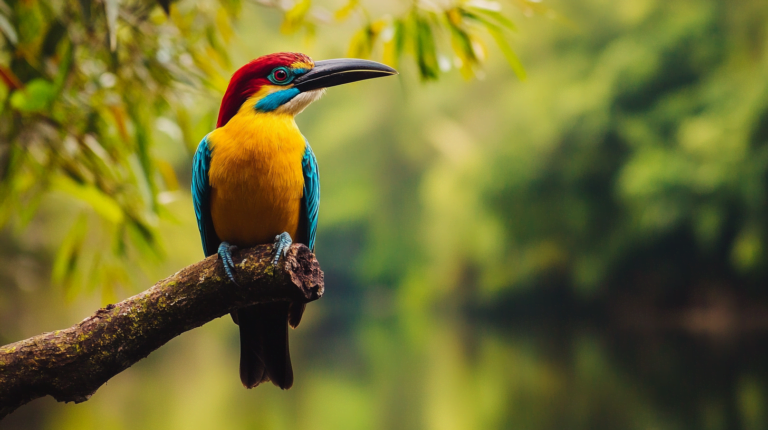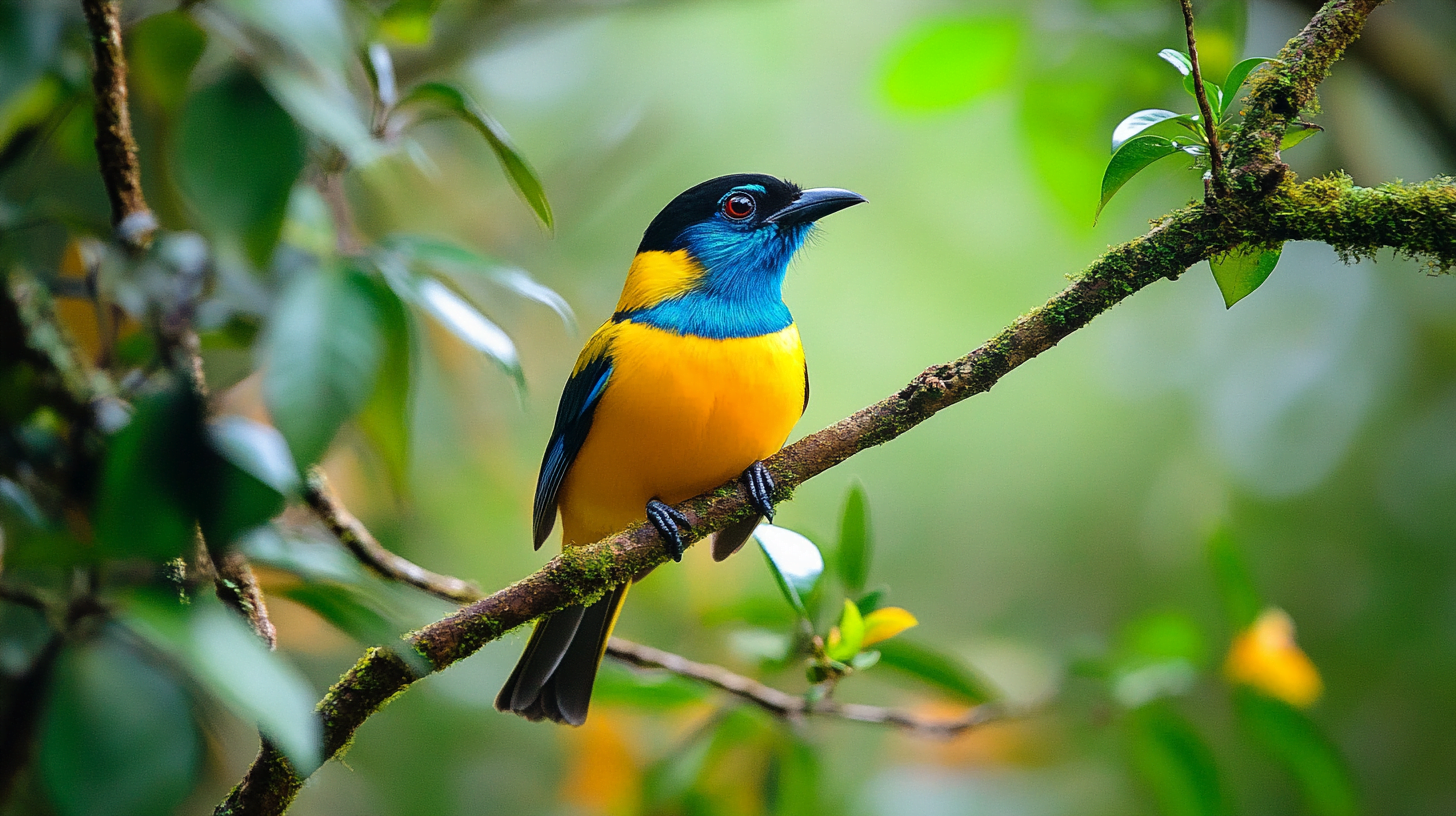
Table of Contents
Brazil, a paradise for birdwatchers, offers an unmatched diversity of avian species. With its vast landscapes ranging from dense rainforests to expansive wetlands, Brazil is home to some of the most spectacular bird species on the planet. This article delves into the rich avian diversity of Brazil, the best birdwatching locations, notable bird species, essential birdwatching tips, and the role of birdwatching in conservation. Whether you’re a seasoned birder or a curious traveler, birdwatching in Brazil promises an unforgettable adventure.
The Rich Avian Diversity of Brazil
Overview of Bird Species in Brazil
Brazil boasts an incredible array of bird species, with over 1,800 recorded species, making it one of the most biodiverse countries in the world. Approximately 10% of these species are endemic, meaning they are found nowhere else on Earth. This extraordinary diversity is due to Brazil’s varied ecosystems, which provide unique habitats for different bird species.
Key Bird Families in Brazil
Several bird families are particularly notable in Brazil:
- Parrots: Brazil is home to a wide variety of parrots, including the vibrant Hyacinth Macaw and the endangered Spix’s Macaw.
- Hummingbirds: These tiny, iridescent birds are abundant in Brazil, with species like the Ruby-topaz Hummingbird and the Black-throated Mango.
- Woodcreepers: Known for their distinctive climbing behavior, woodcreepers like the Great Rufous Woodcreeper are a common sight.
- Antbirds: These birds, such as the Spot-backed Antbird, are often found following army ant swarms.
- Manakins: Famous for their elaborate courtship displays, manakins like the Blue-backed Manakin are a highlight for birdwatchers.
- Cotingas: These colorful birds, including the Screaming Piha, are known for their striking plumage and unique calls.
- Tanagers: With their bright colors, tanagers like the Green-headed Tanager add a splash of color to Brazil’s forests.
Best Birdwatching Locations in Brazil
Amazon Rainforest
The Amazon Rainforest, the world’s largest tropical rainforest, is a birdwatcher’s dream. It hosts an astonishing variety of bird species, including the Harpy Eagle, Scarlet Macaw, and the elusive Hoatzin. The best time to visit is during the dry season, from June to November, when birds are more active and easier to spot.
Pantanal
The Pantanal, the world’s largest tropical wetland, is renowned for its birdlife. Key species include the Jabiru Stork, Hyacinth Macaw, and the Toco Toucan. The dry season, from May to September, is ideal for birdwatching as water levels recede, concentrating birds in smaller areas.
Atlantic Forest
The Atlantic Forest, a biodiversity hotspot, is home to many endemic and rare bird species. Notable birds include the Red-billed Curassow, Black-fronted Piping Guan, and the Bare-throated Bellbird. Conservation efforts are crucial here due to habitat loss.
Cerrado
The Cerrado, a vast tropical savanna, supports a unique bird community. Species like the Blue Finch, Cock-tailed Tyrant, and the Greater Rhea thrive in this environment. Birdwatching trails in national parks such as Chapada dos Veadeiros offer excellent opportunities.
Caatinga
The Caatinga, a semi-arid region, hosts bird species adapted to dry conditions. Look for the Caatinga Parakeet, Pygmy Nightjar, and the White-browed Guan. Birdwatching here requires preparation for arid conditions, but the rewards are worth it.
Pampa
The Pampa grasslands, located in southern Brazil, are home to species like the Greater Rhea, Saffron-cowled Blackbird, and the Pampas Meadowlark. The best times to visit are during the breeding season, from September to March.
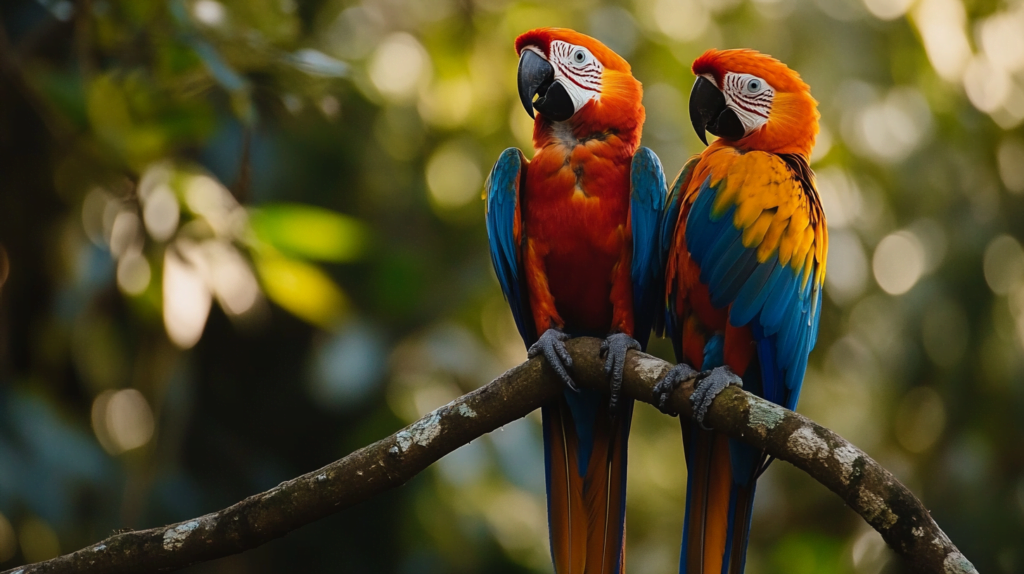
Iconic Birds of Brazil
Toco Toucan
The Toco Toucan, with its striking orange bill, is one of Brazil’s most recognizable birds. Found in the Amazon and Pantanal, this bird is known for its loud calls and social behavior. Its diet includes fruits, insects, and small reptiles.
Hyacinth Macaw
The Hyacinth Macaw, the largest parrot in the world, is a symbol of Brazil’s wildlife. With its cobalt-blue feathers and yellow eye-rings, it is a sight to behold. Conservation efforts are crucial as this species faces threats from habitat loss and the pet trade.
Greater Rhea
The Greater Rhea, a large flightless bird, roams the grasslands of Brazil. Known for its long legs and neck, it is often seen in groups. Conservation challenges include habitat fragmentation and hunting.
Burrowing Owl
The Burrowing Owl, with its distinctive yellow eyes and long legs, is found in open landscapes like the Cerrado. It nests in burrows and is active during the day, making it easier to spot.
Amazon Kingfisher
The Amazon Kingfisher, a vibrant green and white bird, is commonly found near rivers and lakes. It feeds on fish and insects, diving into the water to catch its prey. The best places to see them are in the Amazon and Pantanal regions.
Essential Birdwatching Tips for Brazil
Best Times for Birdwatching
Birdwatching in Brazil is best during the dry season, which varies by region. In the Amazon and Pantanal, the dry season runs from June to November, while in the Atlantic Forest and Cerrado, it is from May to September. Early mornings and late afternoons are the optimal times of day for birdwatching.
Essential Gear for Birdwatching in Brazil
- Binoculars: High-quality binoculars are essential for spotting birds in dense forests and open wetlands.
- Field Guides: Books like “Birds of Brazil” by Ber van Perlo provide valuable information for identifying species.
- Clothing: Wear lightweight, breathable clothing in neutral colors to blend into the environment. Long sleeves and pants help protect against insects.
- Accessories: A hat, sunscreen, and insect repellent are crucial for comfort and safety.
Birdwatching Etiquette
Respecting wildlife and habitats is paramount. Follow these guidelines for ethical birdwatching:
- Keep a Distance: Avoid disturbing birds by maintaining a respectful distance.
- Stay on Trails: Stick to designated paths to minimize habitat disruption.
- No Feeding: Do not feed birds as it can alter their natural behavior.
Safety Tips
- Health Precautions: Ensure you have necessary vaccinations and carry insect repellent to protect against mosquito-borne diseases.
- Navigation: Use maps and GPS devices to navigate remote areas safely. Inform someone of your plans before heading out.
The Role of Birdwatching in Conservation
Conservation Projects in Brazil
Brazil is home to numerous conservation projects aimed at protecting its avian diversity. Organizations like the Brazilian Bird Conservation Program (SAVE Brasil) work tirelessly to preserve habitats and species. Success stories include the recovery of the Lear’s Macaw population through habitat restoration and anti-poaching efforts.
How Birdwatchers Can Contribute
Birdwatchers can play a vital role in conservation by participating in citizen science projects, such as eBird, which collects data on bird sightings. Supporting local conservation initiatives and eco-friendly tourism operators also makes a significant impact.
Sustainable Birdwatching Practices
Minimize your environmental footprint by following sustainable practices:
- Reduce Waste: Carry reusable water bottles and avoid single-use plastics.
- Support Local Communities: Choose accommodations and tours that benefit local economies.
- Respect Wildlife: Follow ethical birdwatching guidelines to ensure minimal disturbance to birds and their habitats.
Planning Your Birdwatching Adventure in Brazil
Travel Logistics
Reaching Brazil’s birdwatching hotspots often involves a combination of flights and ground transportation. Major cities like Manaus (Amazon), Cuiabá (Pantanal), and São Paulo (Atlantic Forest) serve as gateways. Accommodations range from eco-lodges to budget-friendly hostels, catering to different preferences and budgets.
Guided Tours vs. Independent Birdwatching
Both guided tours and independent birdwatching have their advantages:
- Guided Tours: Offer expert knowledge, access to remote areas, and logistical support. Recommended operators include Pantanal Nature and Birding Brazil Tours.
- Independent Birdwatching: Provides flexibility and the thrill of exploration. Ensure you have detailed maps, field guides, and local contacts for assistance.
Local Birdwatching Communities
Connecting with local birdwatching communities enhances your experience. Join birdwatching groups on social media, attend birdwatching festivals like the Avistar Brasil, and participate in local birding events to meet fellow enthusiasts and gain insights.
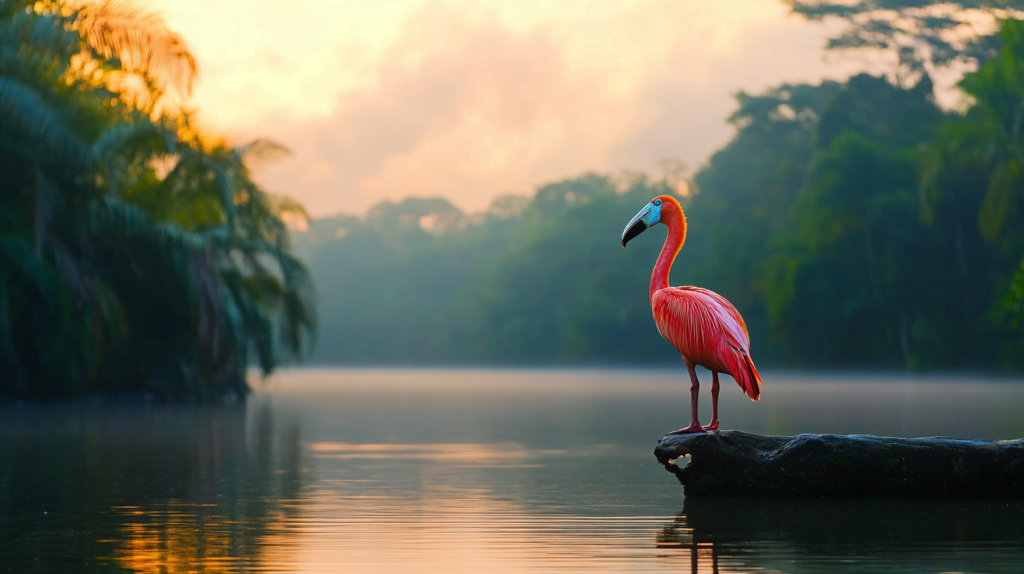
Embrace the Beauty of Birdwatching in Brazil
Birdwatching in Brazil offers a unique opportunity to witness the country’s incredible avian diversity while contributing to conservation efforts. From the lush Amazon Rainforest to the expansive Pantanal wetlands, Brazil’s varied landscapes provide a haven for bird species and birdwatchers alike. Embrace the adventure, respect the environment, and enjoy the enriching experience of birdwatching in Brazil.
Further Reading and Resources
- Books: “Birds of Brazil” by Ber van Perlo, “A Field Guide to the Birds of Brazil” by John Gwynne.
- Websites: eBird, SAVE Brasil, BirdLife International.
- Apps: Merlin Bird ID, Audubon Bird Guide.
- Organizations: Brazilian Bird Conservation Program (SAVE Brasil), Wildlife Conservation Society (WCS) Brazil.
By following this comprehensive guide, you’ll be well-prepared to embark on an unforgettable birdwatching journey in Brazil. Happy birding!
